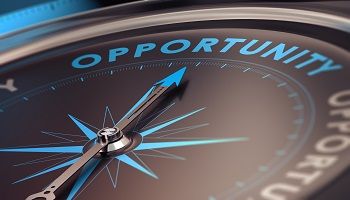“The greatest danger in times of turbulence is not the turbulence – it is to act with yesterday’s logic. – Peter Drucker
I expect most of us are viewing the COVID-19 second wave with some trepidation. When and how will this damn pandemic cease its ravaging ways? When will we be able to return to a somewhat normal life? What will it look like, even if it is a different new normal?
We’ve seen countries around the world try a multitude of approaches to contain the spread of the virus with varying degrees of success. Through those efforts we have acquired some vital lessons learned:
- Wearing masks, distancing, hand washing with plain old soap and water, testing, tracing, quarantining work.
- Lockdowns, when enforced, work in the short term.
- Outdoor gatherings are much safer than indoor gatherings.
- Older people are more vulnerable than the young.
- Asymptomatic people can infect others.
- Ongoing illness after infection, the long haulers or long COVID, may cause a multitude of symptoms affecting the respiratory system, the brain, cardiovascular system and heart, the kidneys, the gut, the liver, the skin, smell and taste.
- Most event transmissions have taken place in indoor settings where people were confined together for a prolonged period, including nursing homes, prisons, cruise ships, food processing plants and worker housing as well as weddings, funerals, and religious and family gatherings.
- Certain activities, like singing, shouting or heavy breathing during exercise can spread more aerosol particles and droplets leading to virus transmission.
- The virus can be air borne, leading to increased rates of infection.
- The coronavirus can infect animals like dogs, cats and mink and appears to be able, at least with mink, to jump to human subjects.
- Controlling travel and sealing borders, both domestic and international, along with temperature checks, enforced quarantines and regular testing and tracing of visitors are essential steps to limit spread.
- Finally, united political and health leadership and consistent messaging across national, provincial/state, municipal and community boundaries, with enforced consequences for violators, are the essential force multipliers.
The novel coronavirus is a massive change involving seven plus billion people and every nation on earth. It’s impacting almost every element of our twenty-first century lives. Our efforts to cope with and conquer the coronavirus will alter the shape of our societies going forward.

There is no question that some progress is being made on the treatment front. A recent article in the New York Times reported that 1.5 percent of diagnosed cases in the US have been fatal in recent weeks, compared to 7 percent during the virus’s initial surge in the early spring. As well, also according to the New York Times, there are 52 vaccines in clinical trials in humans, including 11 in large-scale Phase 3 trials. At this point we don’t know how many will prove effective, what the level of protection will be, how long the protection will last and how many treatments will be required for immunity.
In the meantime, we continue to see a resurgence in COVID-19 cases. Why? People let down their guard. Period! They go back to gathering in existing indoor settings, at home, at work, at restaurants and bars, at weddings, funerals, parties and celebrations, shopping malls, at the gym, sporting events, concerts, theatres, etc. They don’t wear or stop wearing masks. The don’t maintain a safe distance. They don’t avoid indoor gatherings. They don’t wash their hands frequently. If they do test positive, they don’t abide by the quarantine regulations and they can’t remember who they have been in contact with over the last week or two to aid in tracking and tracing. And all too often, there are no enforced consequences for rule violators. Some commentators call this COVID fatigue.
Given our experience to date, the coronavirus will probably be around for quite a while in one mutated form or another. Perhaps people infected with COVID-19 will develop some immunity against reinfection for some period of time. Maybe we’ll get one or more vaccines that work against the current version of the virus, maybe they’ll be available starting in 2021 and perhaps most people will get vaccinated.
Unfortunately, those are some very big probabilities, perhapses and maybes. But what are we going to do in the meantime? Rotating lockdowns? Shoot for herd immunity? Ignore the pandemic and leave it up to individuals to act accordingly? Ask the folks in North Dakota how that’s been working out. A recent article by Rhythm Sachdeva in the Toronto Star, A tale of two COVID quarantines: My strict lockdown experience in Thailand versus a relaxed approach in Canada, effectively sums up the challenge: “For me, the contrast in my quarantine experiences is reflective of a fundamental cultural gap. In most Southeast Asian countries, governments set rules and enforce them, whether in crisis or not. In North America, you have to rely on people and yourself to educate and protect yourself. Is willpower enough to complete a quarantine? Several news stories and studies indicate not.”
There’s another option: aggressively manage the changes so we can more safely coexist with the coronavirus. Yes, that involves millions of changes to address activities of daily living in millions of different settings. It’s not about whether we lockdown or not but about what changes need to take place for us to operate and live safely. To figure that out, jurisdictions need to share, the affected need to be involved, creative solutions need to be considered and the most promising funded, tried, tested and, if viable, implemented on a broader scale.
As a practitioner of organizational change management, it is clear to me that fundamental change management practices have been applied by jurisdictions that have successfully controlled the coronavirus spread. That includes China, South Korea, Vietnam, New Zealand, Australia, Senegal, Iceland, Denmark, Taiwan, Singapore and Thailand.
Advertisement
[widget id=”custom_html-68″]
What are those fundamental change management practices?
- A committed sponsor with the organizational, logistical and political skills – these must be the international leaders, presidents, prime ministers and heads of state that need to lead the charge.
- A business case and rationale for change – this means articulating the cost of the status quo: lockdowns, illness, death, business failures, job losses and the huge cost of the vaccines for the world’s population.
- Engaged key stakeholders – this includes governors, premiers, mayors, councilors, community leaders and business leaders at all levels, educators, medical practitioners, academics and all others in a position to influence outcomes and behaviours.
- A change roadmap, whether Kotter, Prosci, ACMP or others to show the way.
- Cascading sponsorship from the top to the shop floor.
- Value driven decision making – that includes rapid implementation of changes to minimize the risk and maximize the positive impact.
- A plan to get there – that is comprehensive, communicated and supported by all segments of the community.
- Change targets, the people ultimately affected, fully involved and supported on the path to the planned future state – that means you and me, our family, our neighbours and our colleagues getting with and sticking with the programs.
- Fully skilled and staffed change teams – including people who really do understand how to manage change.
- A communication plan that addresses the WIIFM (What’s In It For Me) question – if our leaders are asking people to change how they live in myriad ways, it is incumbent upon them to articulate the rationale for people’s efforts and sacrifices and it is incumbent upon citizens to react with their fears, issues and concerns and negotiate solutions that everyone can buy in to and bring about.
I would add an eleventh item – Think Big, Start Small, Learn Fast. In a Forbes article, Six Words To Remember in 2019: Think Big, Start Small, Learn Fast, Chunka Mui, a strategy and innovation adviser argues that those six little works are the key to successful innovation. And there is no question. Humankind’s efforts to overcome today’s challenges and get to a new coronavirus normal will require successful innovation on a massive scale.
For the countries that have managed successfully to date, most of the above fundamentals are in place for the short-term challenge. For the jurisdictions that are struggling to contain the spread, the above practices and processes have been minimally leveraged or not applied at all. However, few are targeting beyond the immediate threat. That’s the real opportunity!
How Great Leaders Can Deliver
Daryl Conner, a change management leader and author of a number of books on the subject including Managing at the speed of change often stresses that those involved in and affected by a change will get on board with change management efforts when they realize that the price of the status quo is dramatically higher than the cost of the transition. So, what is the cost of the status quo?
Governments worldwide have allocated billions of dollars during the first COVID-19 wave to subsidize wages, rents and living costs and bail out businesses. But, thousands of businesses are struggling or have failed. Millions of jobs have disappeared and many may not be coming back. How much more money will governments have to spend on the vaccination programs for their citizens, to support lockdowns during the second wave? The third wave? The nth wave? How many businesses will go under? How many people will lose their jobs, their homes, their lives?
Why not redirect some of those massive funds and that expertise to make places of business and government, educational institutions, hospitals and doctors offices, long term care facilities, travel and tourism equipment and facilities, dining places and meeting places coronavirus resistant or coronavirus free. Let’s experiment with improvements in layout, physical plant, HVAC and filtration systems and the introduction of new practices and technologies to filter, wash and cleanse the air and surrounding surfaces. Let’s invest in more accessible and more comfortable personal protective equipment.
I don’t have the specific solutions, and that’s the point. The remedies need to come from the people who are intimately involved, to shape ideas into realities at the local level. Leaders need to stop talking at people and start engaging with people. This can not be a one-size-fits-all exercise. It has to be a smart, fleet, value driven, local practice, exercised on a multitude of fronts to work.
Many businesses, organizations, communities and individuals have responded to the coronavirus challenges to address their unique circumstances. More power to them. But it has often been one off solutions, in isolation. Here are a couple of examples that may offer wide ranging applicability and long term value:
- Long term care for seniors: According to an article in the Washington Post, Nontraditional nursing homes have almost no coronavirus cases. Why aren’t they more widespread? , “At ‘Green House’ homes, the best-known nontraditional model, residents are one-fifth as likely to get the coronavirus as those who live in typical nursing homes — and one-twentieth as likely to die of the disease it causes.” Approximately 80% of COVID-19 deaths in Canada have been in long term care homes. I expect the numbers are similar in other nations. Aren’t the ‘Green House’ or similar models worth exploring?
- Cruise ships: This Reuters article, S. CDC issues framework for resumption of cruise ship operations, summarizes the work the Center for Disease Control and Prevention has done to help the cruise industry get back on the water. Why not similar initiatives for other travel and tourism domains, hotels, auto and equipment rental agencies of all kinds?
- Entertainment: Professional sports leagues around the world have tackled the coronavirus challenge with a variety of approaches and varying degrees of success. This article from the World Economic Forum, This is how COVID-19 is affecting the world of sports, summarizes the impacts and challenges. What were the aggregate lessons learned? Could these be applied to other forms of athletic competition to improve the experience for athletes and spectators? Can they benefit amateur and youth sports? Could the learnings be applied to other forms of entertainment?
- Dining: This Toronto Star article, Designer domes and pandemic friendly patios: cities and restaurants get creative to extend outdoor dining through the winter, presents a number of initiatives by restauranteurs to recover some of the business lost due to lockdowns and extend and embellish the dining experience. What worked? What didn’t? How can our leaders organize to help local restaurants survive and thrive using learnings from theses innovators?
- Indoor gatherings: A CBC article, How businesses and schools are dealing with airborne COVID-19 and preparing for a winter indoors, features a gym and a private Toronto boys school that have taken steps to improve the quality and safety of indoor air. Are these steps effective in reducing the transmission of the virus? Can the changes be applied to other indoor settings, like long term care homes, cruise ships, arenas and stadiums, theatres, shopping malls, restaurants, bars, and office buildings? Let’s find out.
So, who is going to make all this happen? To work, this needs unstinting, cascading leadership both broad and deep, and committed and supported followers across the board. It starts with our leaders. They really do need to start driving the changes to minimize the novel coronavirus’s long term impact on daily living. They need to learn from those nations that have been successful. They need to apply management of change principles and practices. They need to encourage Think Big, Start Small, Learn Fast. They need to involve municipal leaders and health authorities, business owners, educators, academics, customers, neighbours, innovators, manufacturers, competitors and change managers in the process of understanding the current state, identifying and vetting future opportunities and selecting ones to implement. They need lead the charge and to help with the finances – to try the promising approaches and measure their effectiveness. For the successes, communicate and fund far and wide. Figure out how to replicate at the speed of light. Use the army, the unemployed, students, retirees, volunteers, whomever and whatever is necessary. They need to help marshal the incremental resources and talents to draw on – health, government, legal, financial, business, engineering, manufacturing, construction, education, consumer, neighbourhoods and others – to optimize and accelerate solution delivery? And they have to engage fully with their citizens. This really is an opportunity of a lifetime!
But it also starts with us, everyday people who have thoughts and ideas of how to make a better tomorrow, communicating and collaborating with our leaders, helping to shape the future. That’s called embracing a change management mindset. Let’s be smart and rise to this challenge. We have nothing to lose.





